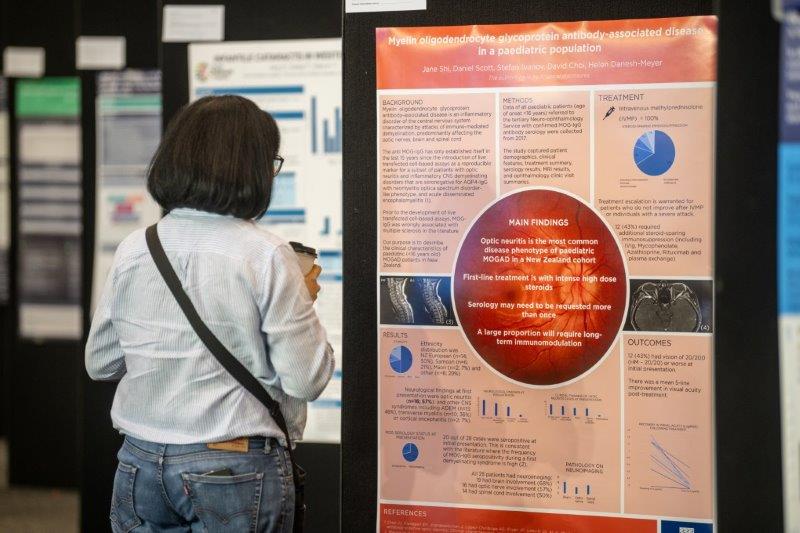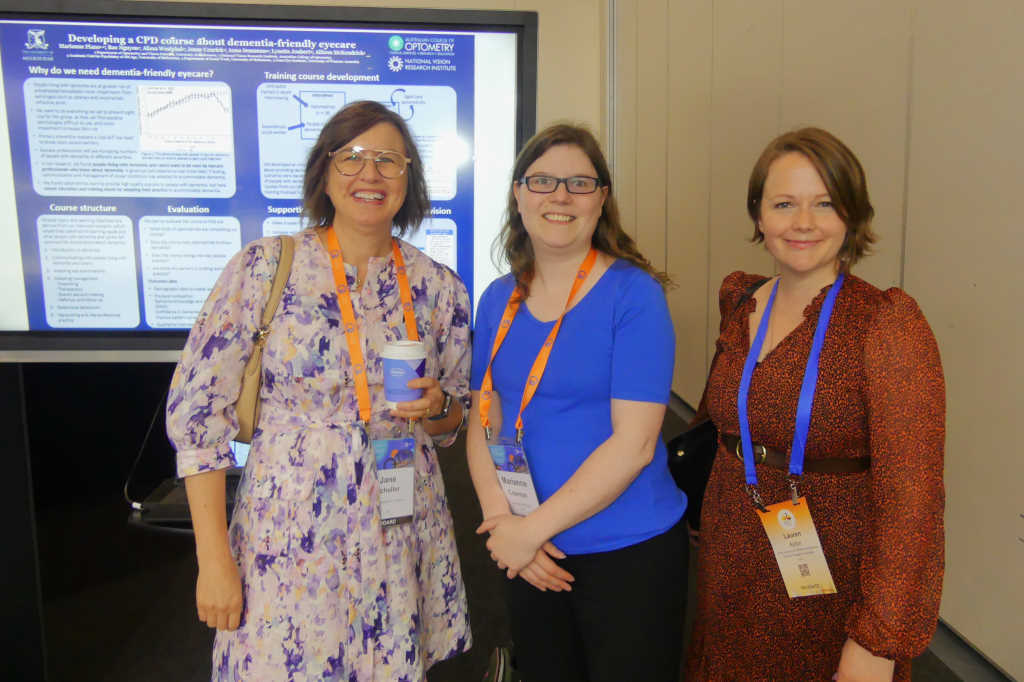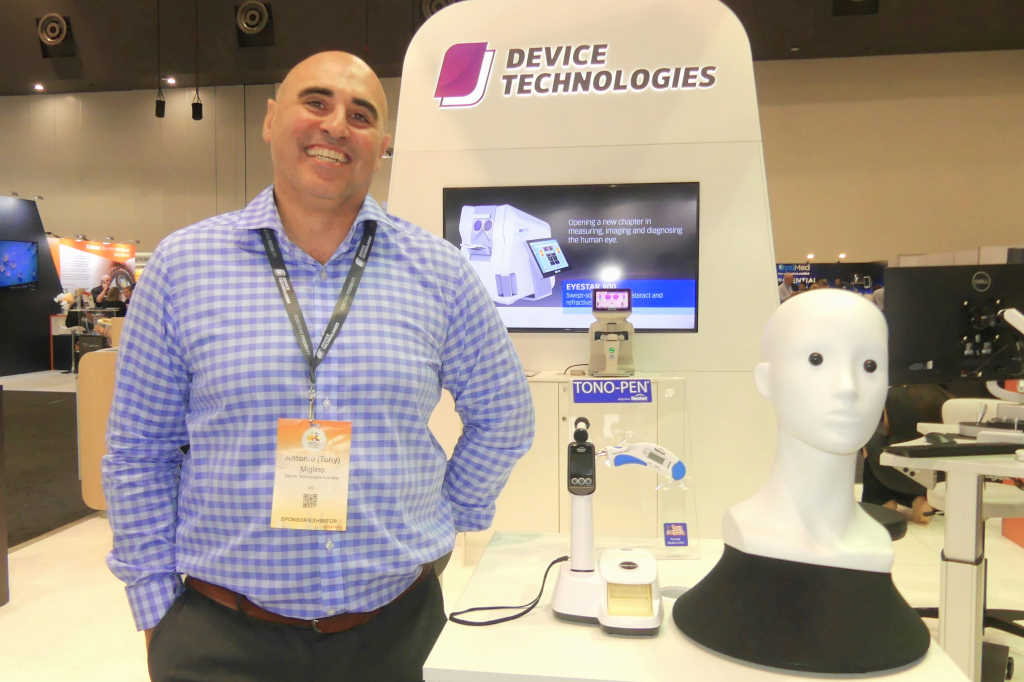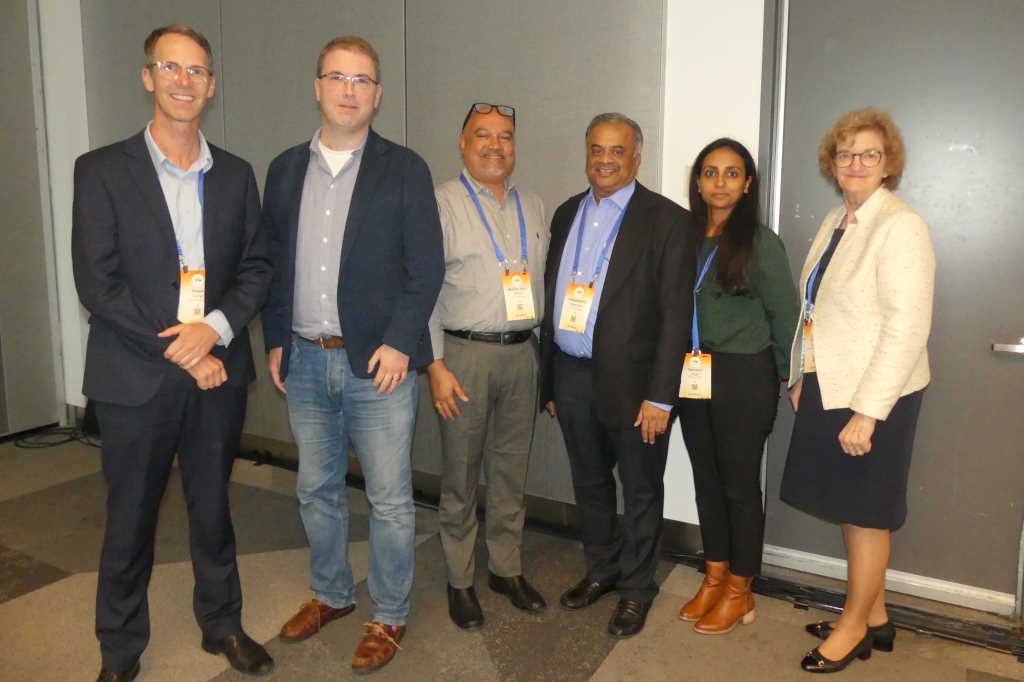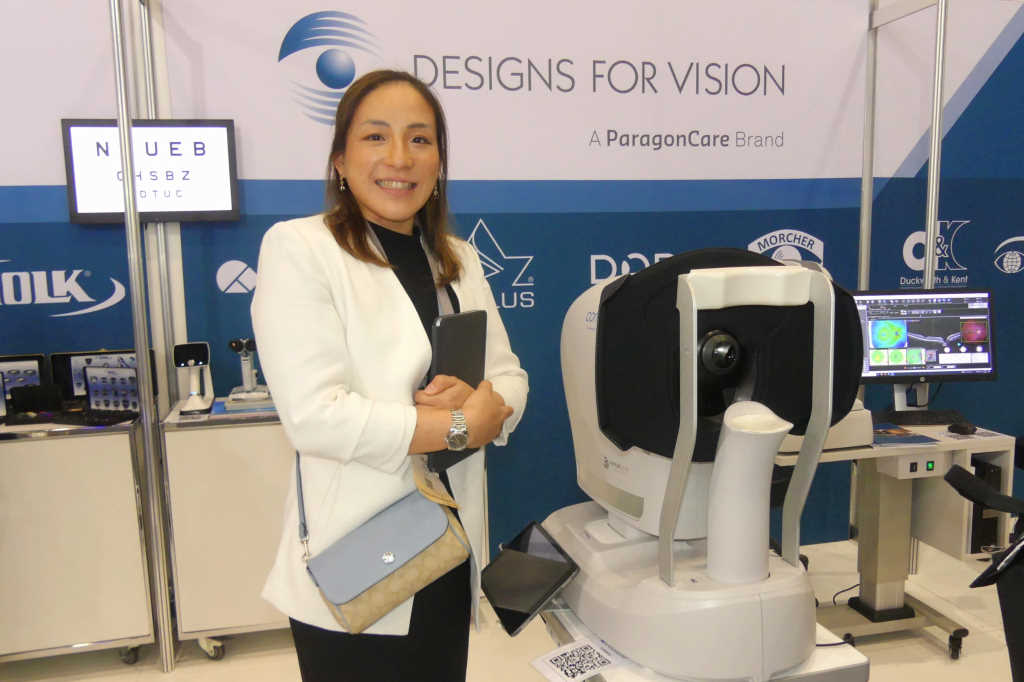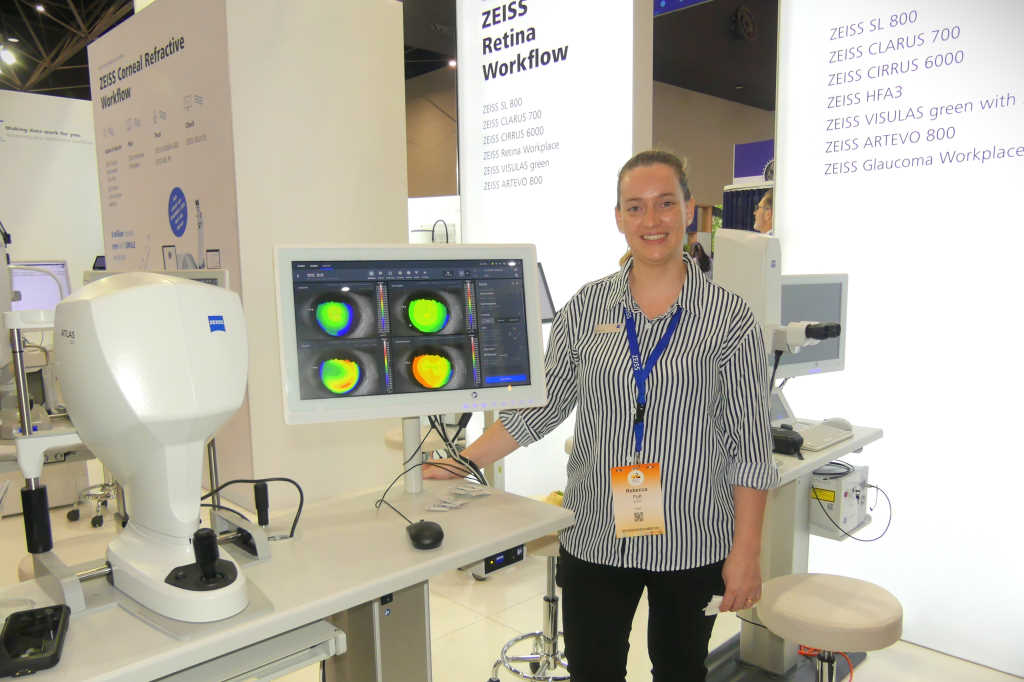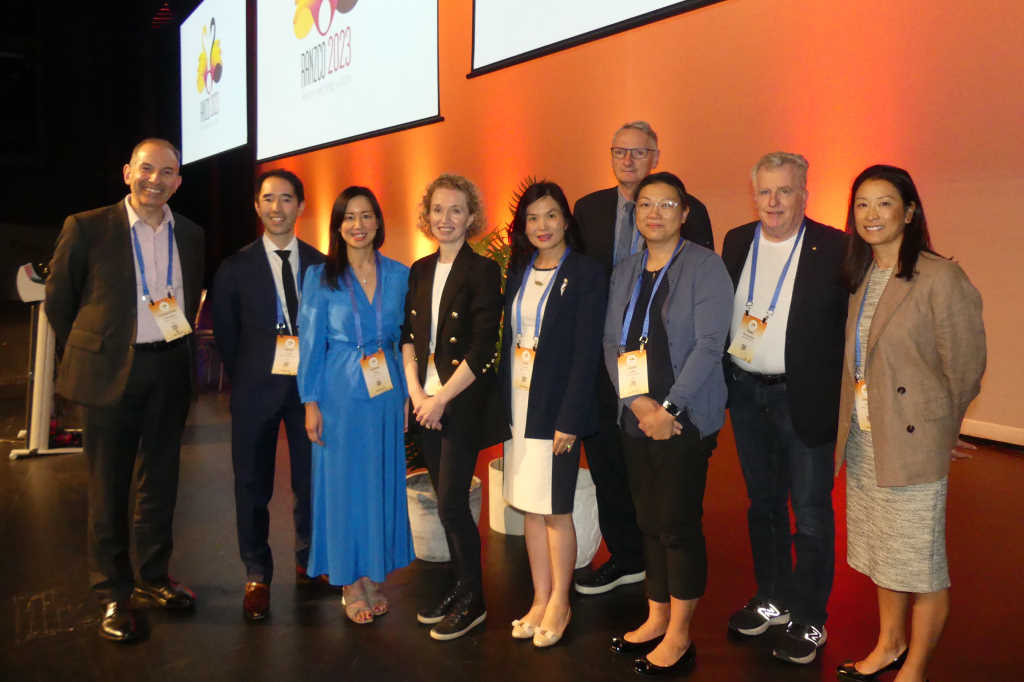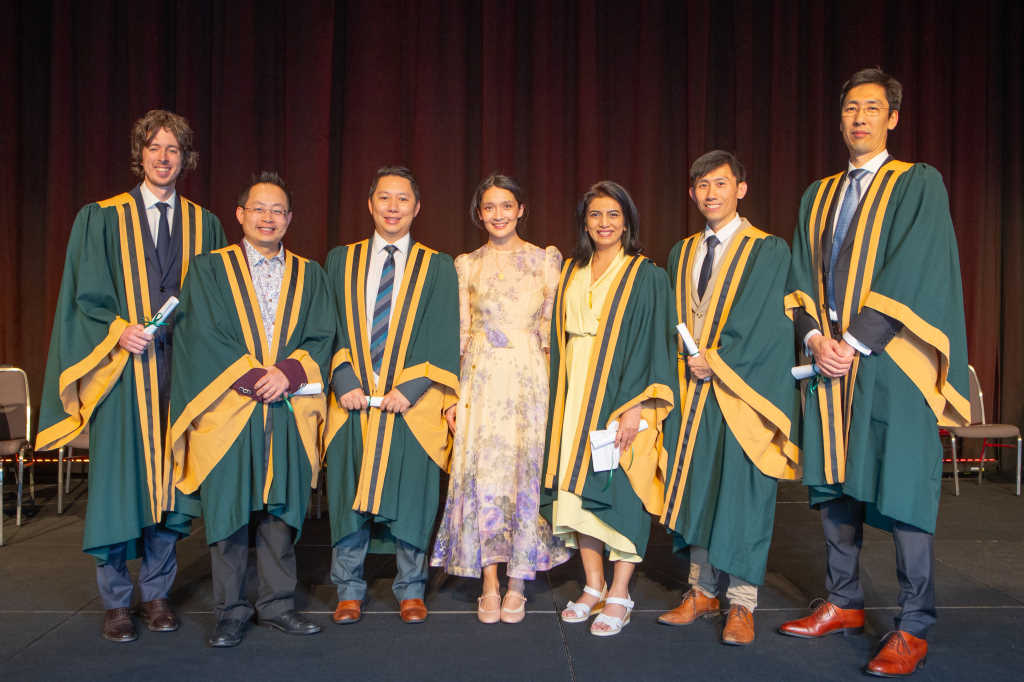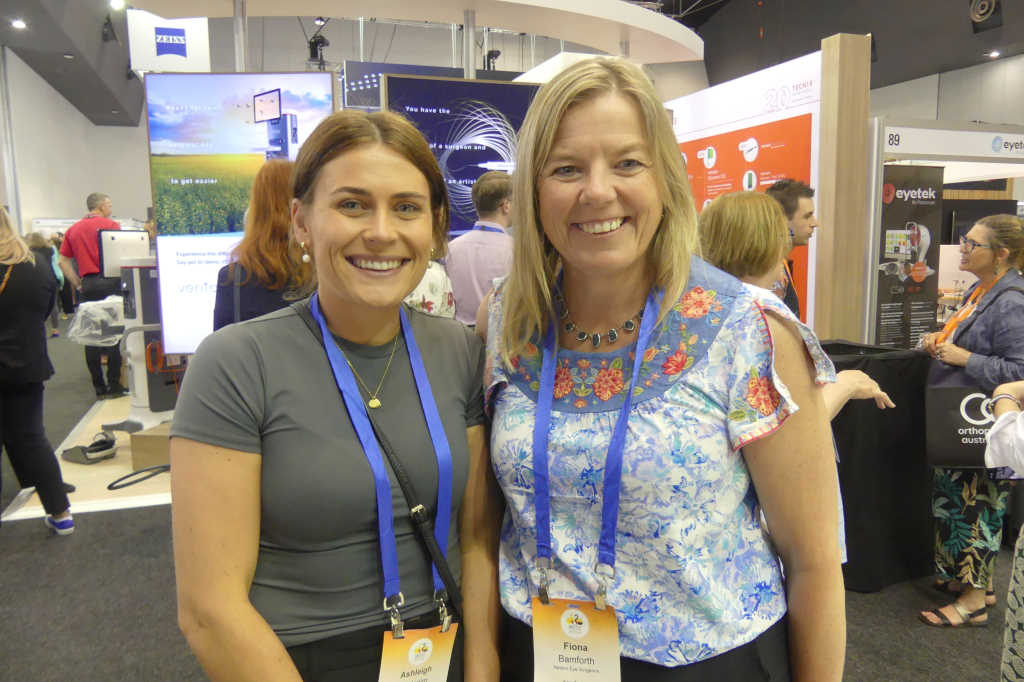Poster highlights: a snapshot of studies at RANZCO 2023
December 20, 2023
Staff reporters
As ever, RANZCO’s poster area offered a glimpse into some of the work behind the scenes by the region’s ophthalmologists and clinical researchers, and included a healthy smattering from Aotearoa. Here are some that caught our eye.
- Queensland researchers investigating Rho-kinase inhibitor ripasudil (Glanatec) found it had a positive impact on preserving the cornea’s functional integrity following grafts, affirming previous findings. Noting a course of ripasudil treatment costs around a tenth of a corneal graft, Dr Yue-Ying Liu, from Princess Alexandra Hospital and Queensland Children’s Hospital, said the drug “offers a hopeful pharmacological and cost-saving option for handling deteriorating corneal transplants, potentially sparing patients additional endothelial graft procedures”.
- University of Auckland (UoA) PhD student Dr Tasleem Ahmad’s poster documented his results from a summer spent poring over 3,000 retinal images. Supervised by Dr Rachael Niederer, he evaluated indocyanine green angiography changes in uveitis patients, noting significant variation in hypofluorescent dark spots between different uveitis aetiologies.
- UoA’s Dr Jane Shi et al studied myelin oligodendrocyte glycoprotein antibody-associated disease (MOGAD), establishing that optic neuritis is its most common disease phenotype in young New Zealanders, a large proportion of whom will require long-term immunomodulation.
- Inherited optic neuropathies was the subject of Associate Professor Andrea Vincent et al’s study, which found “a reasonably high prevalence of syndromic disease, particularly Wolfram syndrome”, with their study revealing causative variants in 64% of patients.
- Drs Madelyne Jouart and Albie Covello’s work reinforced international study findings that insulin eye drops appear to be a safe, cheap and effective option for treating resistant neurotrophic corneal ulcers.
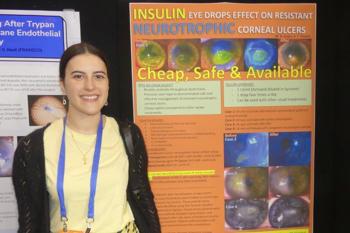
Dr Madelyne Jouart and her research poster at RANZCO 2023
- A poster by Drs Lize Angelo, Akilesh Gokul and Mo Ziaei and Professor Charles McGhee detailed findings that community optometrists’ role in keratoconus diagnosis and management would be improved with more co-management opportunities with ophthalmologists, access to corneal imaging devices and training for specialist lens fitting.
- Two posters by UoA’s Dr Soobin Namkung, with Drs Jina Han and Bia Kim and Prof McGhee, reviewed the ongoing benefits of the New Zealand Cataract Risk Stratification system and assessed patient attitudes to trainee involvement in cataract surgery. Although more than half did not recall seeing or being told a trainee may perform their cataract surgery, the majority (90%) supported the move, given the “need for trainees to learn”.
- Among the take-home messages of Dr Isaac Samuels and colleagues’ ‘Developing an Indigenous eye health framework in New Zealand: Ngā Mata o te Ariki’, was that creating a culturally safe space is the responsibility of the healthcare practitioner and Māori beliefs may make eye examinations difficult without adequate communication and consent.
- Also surveying ophthalmologists, another UoA study (Dr Sarah Oh et al) revealed YouTube was ophthalmology fellows’ most used (96%) and most useful (41%) resource to learn new surgical techniques.
- A survey on current practice patterns in managing thyroid eye disease by University of Otago researchers found 66% of those surveyed see less than one case per month and their first-line treatment choice is intravenous prednisolone. Although 35% of ophthalmologists said they use radiotherapy, they cited side effects as the most significant barrier to use. More than half the respondents said they recommend selenium supplements to patients in mild to moderate cases.
- A Whangārei Hospital crosslinking study by Drs Laura Wolpert and Stef Guglielmetti found high rates of gram-positive microbial keratitis in patients with a history of atopic disease. Among their recommendations was the removal of bandage contact lens use, post-operative chloramphenicol treatment and follow-up on day three rather than day five.
- Flinders University’s Dr Victoria Tang et al found childhood myopia was associated with significant deficits in sleep-related cognitive function.
- A Royal Victorian Eye and Ear Hospital study by Dr Nicholas Dewhurst et al associated a high level of ocular injuries with exercise bands, particularly during Covid-19 lockdown.
- A joint UNSW-University of Western Australia study (Nhung Tran et al) demonstrated that ‘gamifying’ a learning module increased Australian medical students’ ophthalmology knowledge by almost 10%.
- Sydney Eye Hospital researchers (Dr Lawrence Kwok et al) found the Zeiss Visuscout 100 handheld fundoscope’s imaging capabilities comparable with gold-standard fundus imaging, making it well suited to eye screening in rural areas.
- This theme was echoed by the Sydney Eye Hospital study (Dr Ee Lin Ong et al) which compared patient and clinician experiences using three different portable perimetry devices in the hospital’s emergency department.
- Another Sydney Eye Hospital study, the ‘Sydney Eye Drop Project’ led by Dr Duri Kim, showed that patients found an app and chart developed to improve drop-taking compliance was both easy to use and helped with their treatment adherence.







